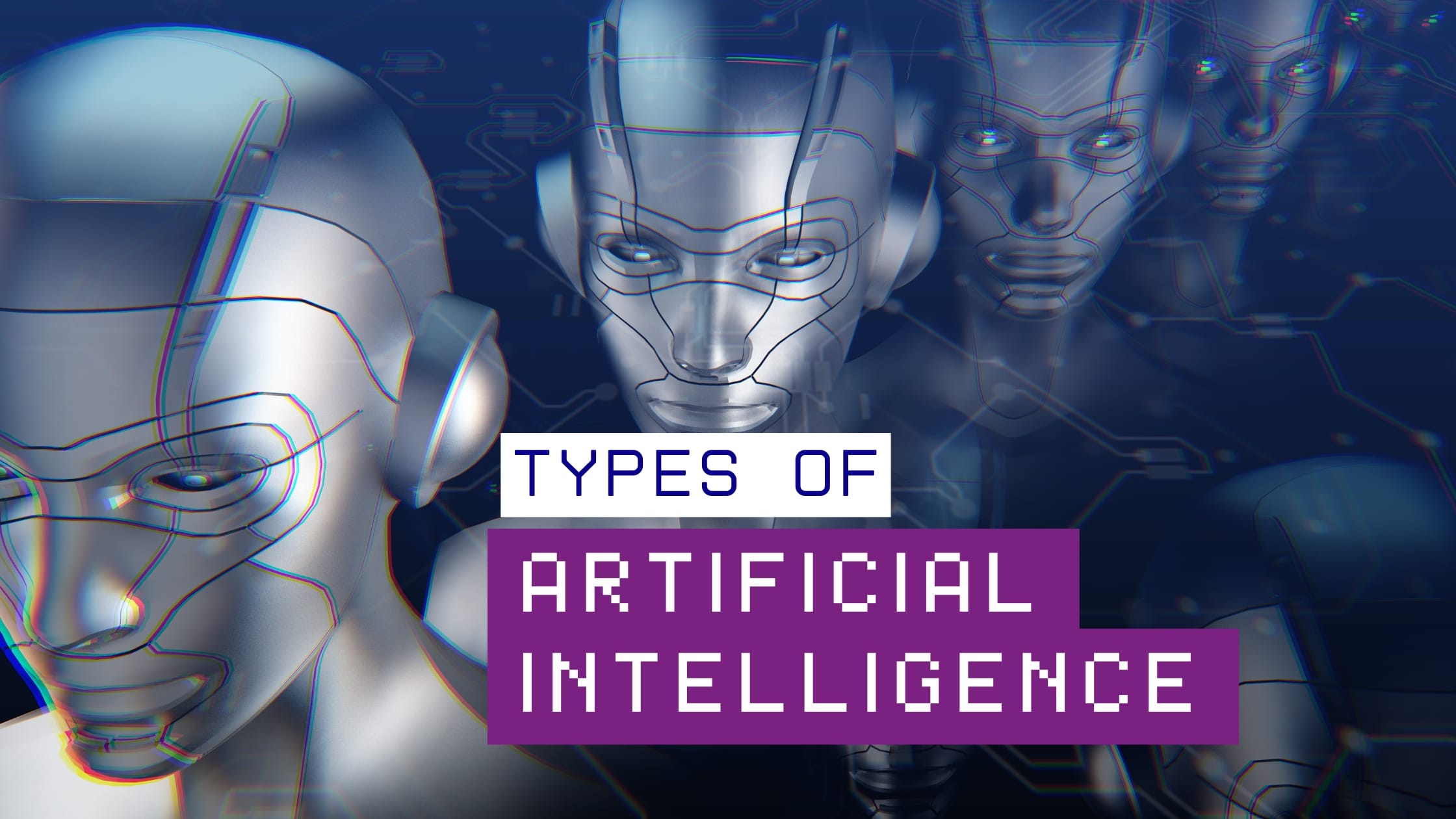Artificial Intelligence (AI) is everywhere today – on your smartphone, in your home and car, in hospitals, shops and even in farming. But not all AI is the same. Some are smart but can do only one thing. Some are learning to think like us. Others are imagined in the future and may be even smarter than humans.
One may say that Artificial Intelligence is, in fact, the most transformative technology of the present time that is reshaping industries, improving the day-to-day lives of people, and exciting ones about what machines can do more. So, what is AI? In essence, AI simply means the computer systems that have been developed to perform the activity that require almost similar human intelligence, such as reasoning, solving problems, language comprehension, image recognition, and even making decisions. Unlike the regular software that does a task exactly to recognise, and even make decisions. Unlike regular software that does a task exactly to the letter, the AI system is further from that, as it learns from data and changes imperfections over time, much like a human.
AI is not a particular technology, but an entire field consisting of several methodologies. Machine Learning (ML), a subfield of AI, incorporates algorithms whereby the patterns in the data analyzed are used to predict possible outcomes/decisions. For instance, a spam filter would learn to categorize unwanted emails by observing thousands of example tasks such as image recognition or natural learning processing. AI, apart from ML, also includes fields such as Computer Vision, Robotics, and Expert Systems, all of which push the envelope further and further in terms of what machines are capable of.
How Does AI Work?
The fundamental technology of AI rests upon an algorithm that can deal with volumes of data and extract insights. The first step, data collection, starts. The data can be converted into images, texts, audio, or even sensor readings. Next, the data goes into a model that tries to find patterns; this is a mathematical construct. For example, to train an AI to identify cats in pictures, you would show it thousands of labelled images: some containing cats, some without (the latter aptly known as background images). The model then analyzes features such as shape, colour, and texture while tuning its internal pattern to minimize errors.
Training is pivotal in AI design and development. Here, they update parameters through backpropagation and gradient descent to achieve better accuracy. When the training is completed, a model is put to the test with unseen data to check the legitimate generalization; i.e. whether it is not memorizing the training set but useful for real-time applications. The deployment phase integrates AI into an application, ranging from a chatbot answering customer queries to recommendation systems suggesting films.
AI models vary in complexity. A simple model might, for example, use a decision tree to classify data, while the most complex models, such as the large language models (LLMs), rely on billions of parameters to produce human-like text. Crushing big data at scale requires enormous computing power from GPUs or specialized chips and development tools such as Python, TensorFlow, or PyTorch.
Why is AI Important?
Since it can solve problems at an unusual scale and speed, AI becomes important. In the field of healthcare, it can predict diseases from medical scans; in finance, it can optimize processes through the detection of fraud; and in transportation, it can safely drive vehicles on the road.
Use AI in businesses for personalized marketing, supply chain efficiencies, and customer service automations; all these in turn bring about innovations and savings for the companies.
Otherwise than the commerce, the AI is also on top of the world’s biggest challenges-climate modeling, disaster response, and food security-by processing and analyzing a majority of complex data sets which can never be consumed alone by a human. It democratizes knowledge access; applications like translation apps break language barriers in accessing knowledge. It demystifies ethics, raising critical questions regarding bias, privacy, and job displacements to society toward progression responsibly.
Simply, AI is a tool of huge potential-an amplifier of human capabilities that evens challenges us to steer its growth wisely. The deeper it develops, the more it complicates its impact, making understanding it central to navigating the future.
Who is the father of AI in India?
Let’s break it down and explore all the major types of AI that exist nowadays and those we expect in the near or far future.

1. Types of AI – Based on Capability
Artificial Narrow Intelligence (ANI) – Also called as Weak AI
What it is: This is the type of AI we mostly use today. It’s made to do just one job very well.
Examples: Siri, Alexa, Google Maps, Netflix suggestions, chatbots.
How it works: It’s fast and smart at what it does – but it can’t think outside its job. For example, a chess-playing AI can’t book your flight tickets.
Artificial General Intelligence (AGI) – Strong AI (Not yet real)
What it is: AGI is like a human brain – it can learn, understand and do many tasks.
Examples: None in the real world yet – it’s a goal for researchers.
How it would work: AGI could write poems, fix cars, teach math and hold a conversation – all without needing new programming.
Artificial Superintelligence (ASI) – Beyond Human (Still theoretical)
What it is: This is the future version of AI that could become smarter than any human in every possible way.
Examples: only in science fiction (like the movie – “Her” or “Ex Machina”.
How it might work: ASI would think creatively, have emotions and solve problems in ways we can’t even imagine today.
2. Types of AI – Based on Functionality
Reactive Machines
What it is: The simplest AI. It reacts to what it sees but doesn’t learn from the past.
Examples: IBM’s Deep Blue (chess computer), basic image recognition.
How it works: It sees, it reacts and that’s it. No memory, no learning.
Limited Memory
What it is: These AI’s learn from some past data and make decisions accordingly.
Examples: Self-driving cars that remember road conditions, traffic patterns.
How it works: They use small amounts of past data to improve performance but can’t “think” like humans yet.
Theory of Mind AI ( Future concept)
What it is: An AI that understands emotions, beliefs, and human thoughts.
Examples: Still in development stage.
How it would work: It could sense how you’re feeling and respond in a generous manner, like a good friend or therapist.
Self-Aware AI (Highly futuristic)
What it is: AI with its own thoughts, emotions and consciousness.
Examples: Only seen in science fiction.
How it might work: These AIs could make their own goals and possibly form opinions. We’re nowhere near this yet.
3. Specialized Types of AI – Based on Application & Technology)
Machine Learning (ML)
What it is: AI that learns from data and improves itself.
Examples: Spam filters, stock market predictions, weather forecasts.
How it works: You feed it examples and it figures out the patterns. The more it learns, the better it gets.
Deep Learning (DL)
What it is: A branch of ML that simulates how our brain works using neural networks.
Examples: Facial recognition, voice assistants, translation tools.
How it works: It works with massive amounts of data to understand complex things like images, speech and language.
Natural Language Processing (NLP)
What it is: AI that understands and uses human language.
Examples: ChatGPT, Google Transfer, customer support bots.
How it works: It reads, listens and even writes text in a way we can understand.
Computer Vision
What it is: AI that sees and understands images and videos.
Examples: Face unlock on phones, traffic cameras, medical X-ray readers.
How it works: It identifies objects, people, actions and even emotions through pictures.
Expert Systems
What it is: AI that copies how human experts make decisions.
Examples: Medical diagnosis tools, legal advisors.
How it works: They use logic and a database of rules to solve problems in one area of knowledge.
Robotics AI
What it is: When AI powers robots to act smartly in the real-world.
Examples: Warehouse robots, robot pets, rescue drones.
How it works: These machines sense their surroundings and use AI to move and act appropriately.
Fuzzy Logic AI
What it is: AI that deals with grey areas – not just yes or no.
Examples: Smart washing machines, climate control systems.
How it works: It works well in uncertain situations and mimics human decision-making with in-betweens like “somewhat cold” or “a little hot”.
Reinforcement Learning
What it is: AI that learns by trial and error.
Examples: Game-playing AIs like AlphaGo, robot navigation.
How it works: This AI tries actions, gets feedback (reward or punishment) and learns to do better over time.
Generative AI
What it is: AI that can create new content – text, images, music, code.
Examples: ChatGPT, DALL-E, MidJourney.
How it works: It learns from tons of data and creates original things like stories.
Emotion AI (Affective Computing)
What it is: AI that can detect and respond to human emotions.
Examples: Customer service bots that respond kindly when you’re upset.
How it works: It reads facial expressions, voice tones or word choice to guess how you feel.
Explainable AI (XAI)
What it is: AI that can explain how and why it made a decision.
Examples: Medical AIs explaining a diagnosis, finance tools showing loan rejections.
How it works: Makes AI decisions more transparent, especially in areas where human trust is required.
Edge AI
What it is: AI that works directly on your device instead of in the cloud.
Examples: AI in smartphones, smart cameras.
How it works: It processes data locally for faster response and more privacy.
Swarm AI
What it is: Multiple AIs working together like a team – just like ants or bees.
Examples: Drone fleets, robotic farming, traffic control systems.
How it works: Each unit follows simple rules but together they do complex tasks.
Cognitive Computing
What it is: AI that simulates human thought processes like reasoning, memory, attention and learning.
Examples: IBM Watson.
How it works: It tries to replicate how the brain solves problems, aiming for more human-like understanding.
Neuromorphic Computing
What it is: A new type of AI that uses hardware built to act like the human beings.
Examples: Still experimental, used in advanced robotics and sensor processing.
How it works: Instead of traditional chips, it uses brain-like circuits to process information more efficiently.
Hybrid AI
What it is: Combines two or more AI techniques – like machine learning with expert systems.
Examples: Advanced chatbots, complex decision-making tools.
How it works: It utilizes the strengths of different AI systems to improve performance and flexibility.
Quantum AI
What it is: AI that uses the power of quantum computing to perform tasks much faster than traditional computers.
Use: Complex simulations, cryptography and solving problems with huge data.
This is under experimental stage but promising for medicine, finance and physics.
Ethical AI
What it is: AI systems designed to follow ethical guidelines, fairness and human values.
Use: Preventing bias in hiring algorithms, transparent healthcare decisions.
It ensures that AI doesn’t cause harm, violate privacy or discriminate.
Autonomous AI
What it is: AI that can make decisions and act without human help.
Use: Self-driving cars, autonomous drones, military bots.
It combines perception, planning and action – all powered by AI.
Conversational AI
What it is: AI built to talk with humans in a natural, flowing way.
Use: Virtual assistants (Siri, Alexa), customer service bots, voice AI in smart homes.
It uses NLP, sentiment analysis and sometimes emotional AI.
AI in Edge Devices (Tiny AI)
What it is: AI designed to run on small devices like watches, cameras or IoT gadgets.
Use: Smartwatches, fitness trackers, home assistants.
This processes data locally, increasing speed and privacy.
Adaptive AI
What it is: AI that learns and adapts continuously as its environment or data changes.
Use: Personalized learning systems, fraud detection, dynamic pricing.
It doesn’t just learn once – it evolves in real time.
Meta-Learning AI (“Learning to Learn”)
What it is: AI that improves how it learns over time.
Use: Optimization algorithms, automating ML pipelines.
It can train other AIs or choose the best learning method for a task.
AI in Digital Twins
What it is: AI used to create real-time digital models of physical things (like a building or engine)
Use: Predicting machine failures, simulating city traffic or improving healthcare.
Example: Siemens and GE use it in industrial automation.
Creative AI
What it is: AI that generates artistic work – music, paintings, poetry or fashion.
Use: Music composition, art generation, AI storytellers.
Popular Tools: DALL-E, Amper Music, Runway ML.
Cybersecurity AI
What it is: AI built to detect, prevent or respond to cyber threats.
Use: Malware detection, fraud prevention, network defence.
Popular Tools: Darktrace, IBM QRadar & Watson for Cybersecurity, SparkCognition.
Final Thoughts
AI is not just one big robot brain – it’s a mix of many smart systems, each with a different job. Some are helpers like Siri. Some are learners like ChatGPT. Others are dream projects of the future. The more we understand them, the better we can use them wisely and safely.
From basic machines that follow rules to futuristic AIs that might think like us (or even more than us), Artificial Intelligence is changing the world – and it’s only getting started.










